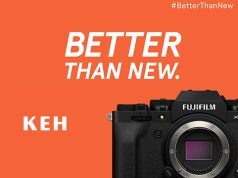
With the recent implosion of Ritz Camera & Image, the ongoing struggles of Best Buy and the highly visible bankruptcy of Eastman Kodak, the photo industry is witnessing a seismic shift. While not as drastic as the shift from analog to digital photography, there is certainly a lot of disruption in the photo channel these days.
The Ritz Camera bankruptcy, the second in three years, is particularly troubling. Does this mean there isn’t a place for at least one national-size brick-and-mortar photo specialty chain? Or do current trends favor regional players, like Creve Coeur Camera?
Remember, a national retail chain is usually driven by a profitable consumable, whether its 4×6 photo prints, coffee or french fries. Without that consumable, it’s hard to offset overhead and staff costs.
It’s no secret the commitment by large drug chains and mass retailers to on-site photo is wavering. Major vendors express concern if one of the big players—like Walmart, Walgreens, CVS, Rite Aid, Target, etc.—cut their photo departments more drastically, others will follow suit. Remember when Wegmans, the leading Rochester, New York-based grocery chain, dropped in-store photo completely? In the grocery channel, Wegmans is seen as an innovator and a leader; when they dropped in-store photo it sent a signal to other grocery stores that it was okay to drop their programs, too. (If there’s one thing to say about large chain stores it’s that most of them are followers, not leaders.)
While some independent dealers may welcome this trend, believing it will result in more volume for them, this may not be the case. Photo printing today is more of a matter of convenience than necessity. With analog photography you had to get your film processed somewhere just to see the pictures. With digital, there’s less of a need to print pictures unless for a specific purpose—a scrapbook, an album, for wall display, for framing, for a gift and so forth. Consider that neither Kodak nor Fujifilm are doing any national media advertising for photo printing; the leader there is Walgreens. Without the chain stores continuously reminding consumers to print—even at brutally low per-print prices—who will take the lead?
Another aspect to consider is the health of the suppliers. At one time, the U.S. photo industry could support numerous sensitized goods suppliers, including Kodak, Fujifilm, Agfa, Mitsubishi, Konica and more. Today, those numbers are trimmed and could get thinner. For one thing, there aren’t enough specialty stores in North America to keep the large suppliers in business. If the chain stores start offering only online ordering, evicting their in-store dry labs and kiosks, look for your choice of vendors to get even fewer.
And, the recent announcement that Kodak is now searching for a buyer for its Personalized Imaging division, which includes film, paper and kiosks, only adds uncertainty to the mix.
The point of this article is not to paint a doom-and-gloom picture but to point out how things have changed in a short time. In fact, many specialty storeowners are confiding they are having good, if not great, results this year. Photography has never been more popular with more people, thanks to photo apps on smartphones and to great new hardware like mirrorless compact system cameras.
Smart retailers adapt to conditions; this has always been true. The successful photo specialty stores have effectively emphasized what makes them unlike the chain stores—personal service, hands-on classes and events, and local community involvement—while de-emphasizing similarities to their big-box and online competitors.
The key for successful photo stores to thrive will be to wean themselves off of the brand names in favor of their own. Back in the days of free-flowing co-op, it was beneficial for retailers to use the manufacturers’ marketing dollars for TV, newspaper and Yellow Pages ads. Now, in the age of websites, social media and YouTube, it’s to the benefit of retailers to promote their own local brands, with manufacturers’ brands being more of an ingredient. With most camera makers now selling direct and/or allotting hot-selling products first to online and chain retailers, this makes sense.
Over the long term, this will improve the situation for manufacturers and distributors, as well. A vibrant independent photo specialty channel can complement a brand’s marketing efforts, as well as provide more opportunities for consumers across all levels of the value chain.
Gary Pageau is the former publisher of PMA magazine at PMA International. He is currently with InfoCircle Content Marketing Services. theinfocircle.com





